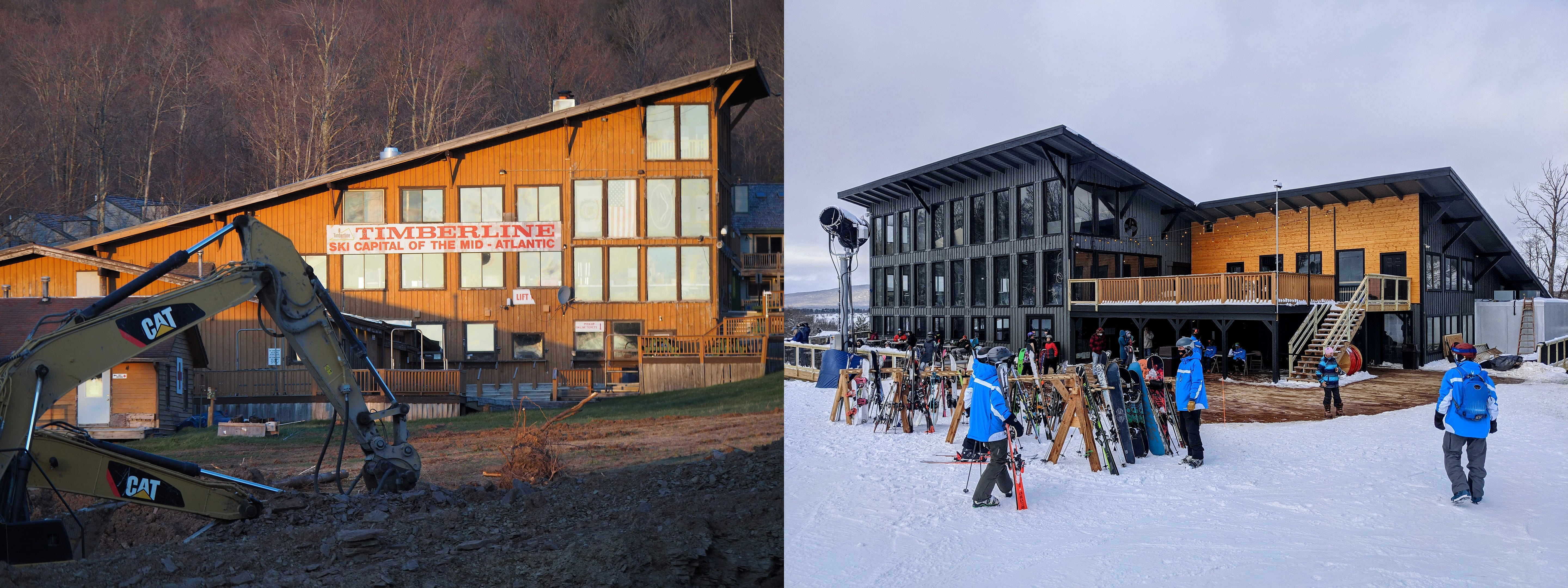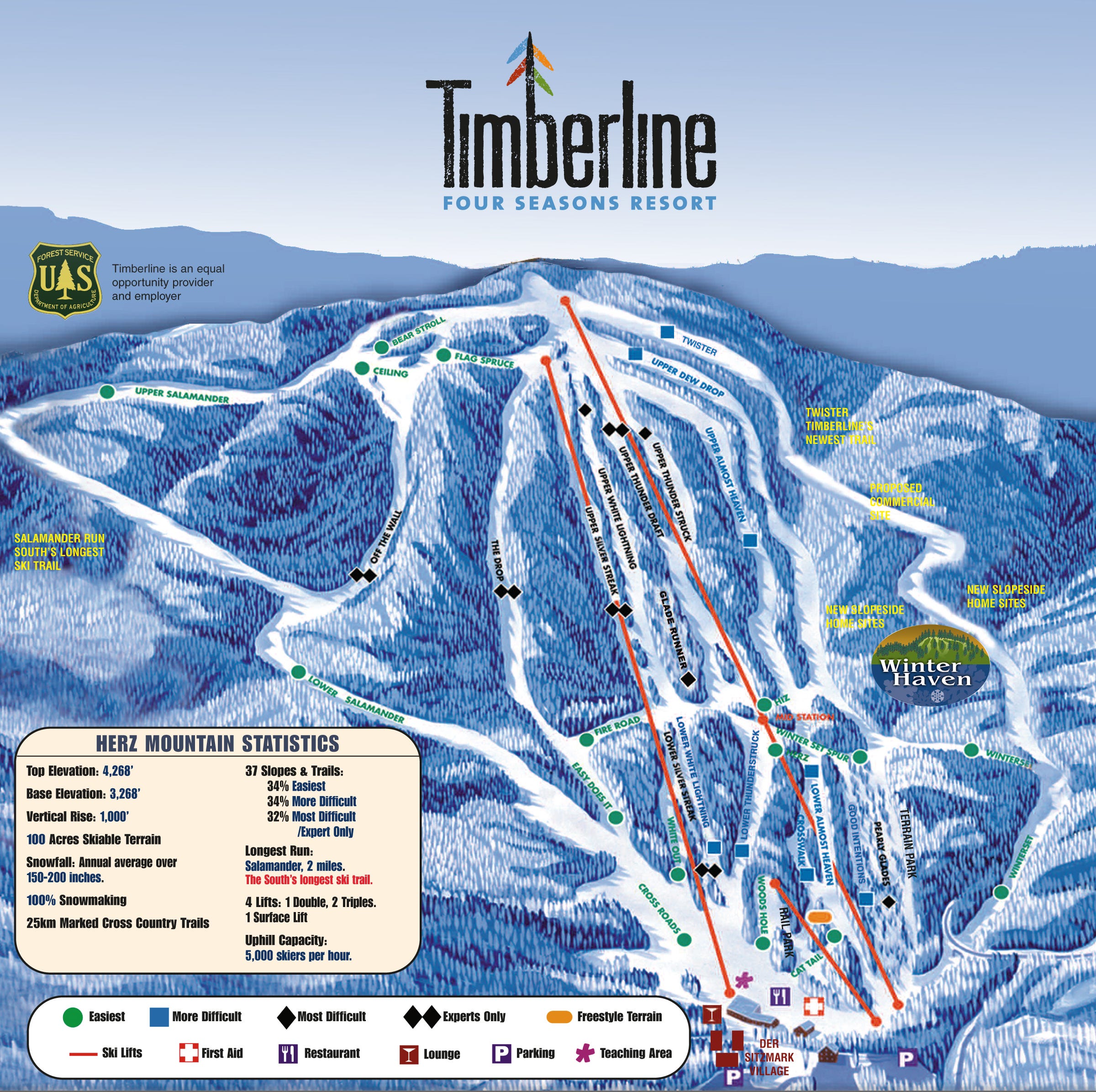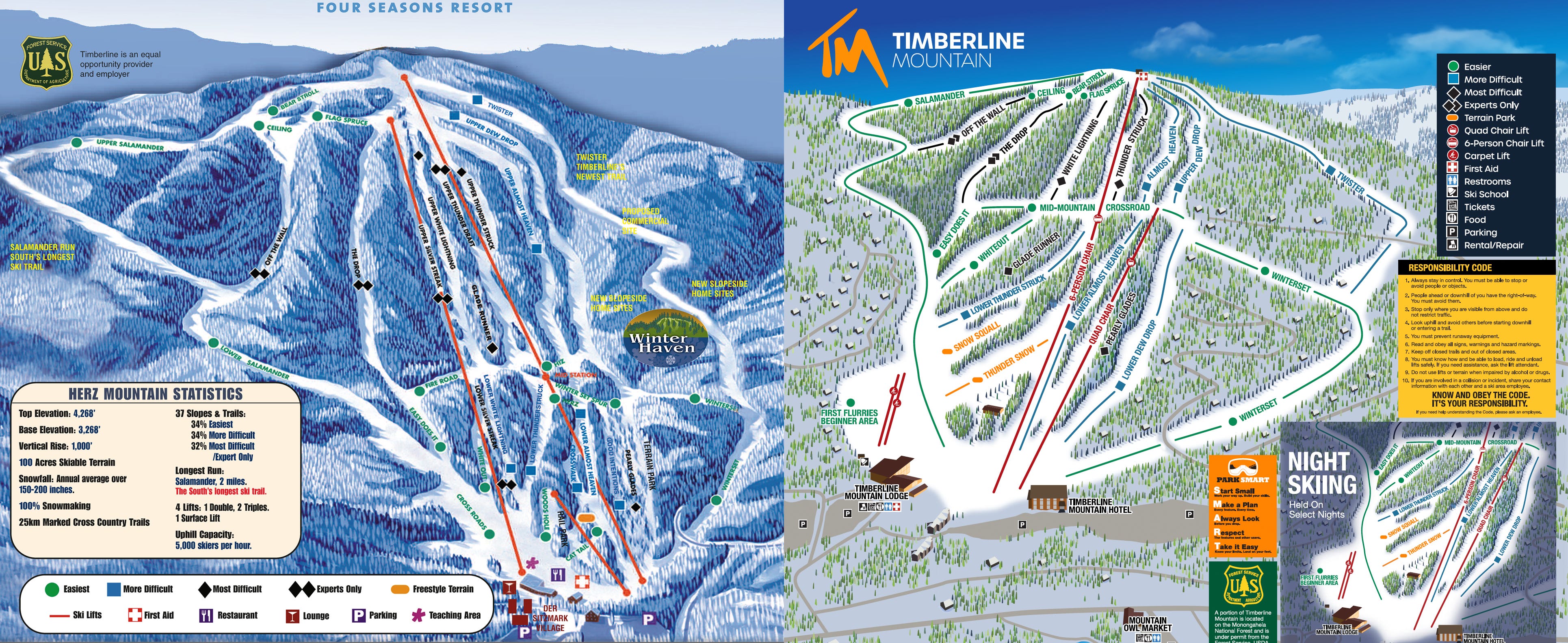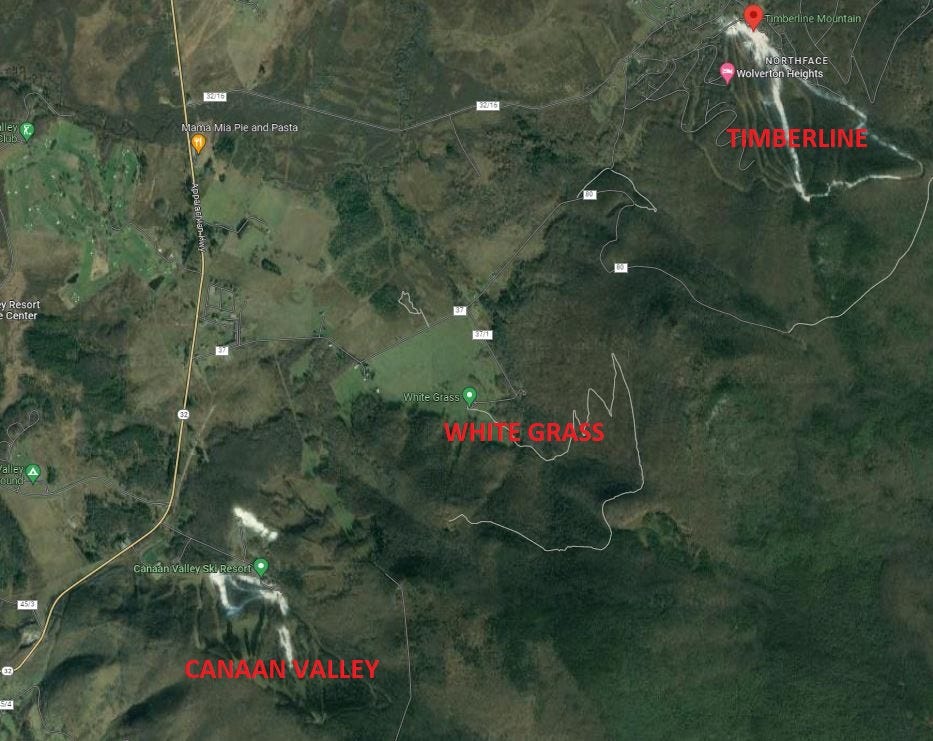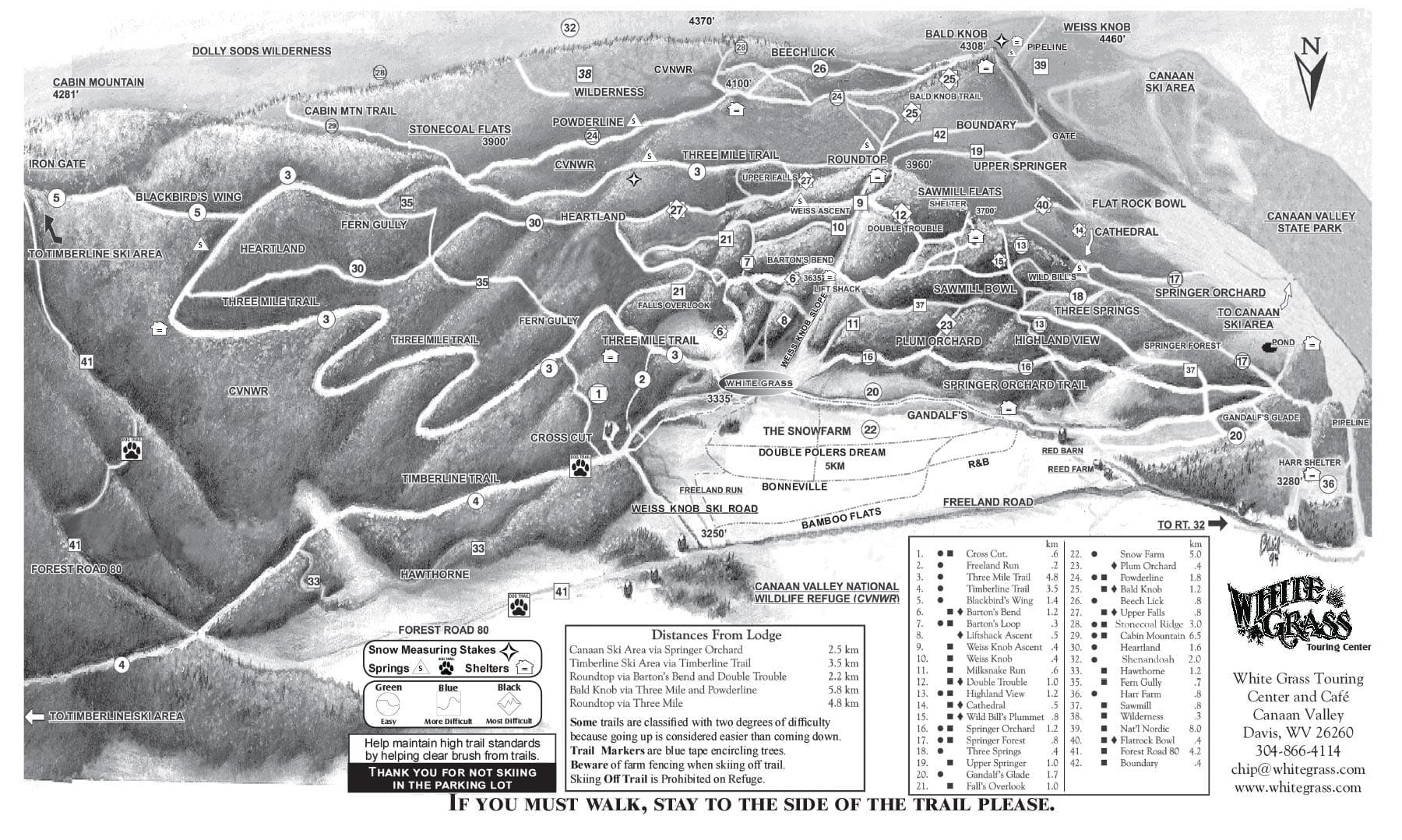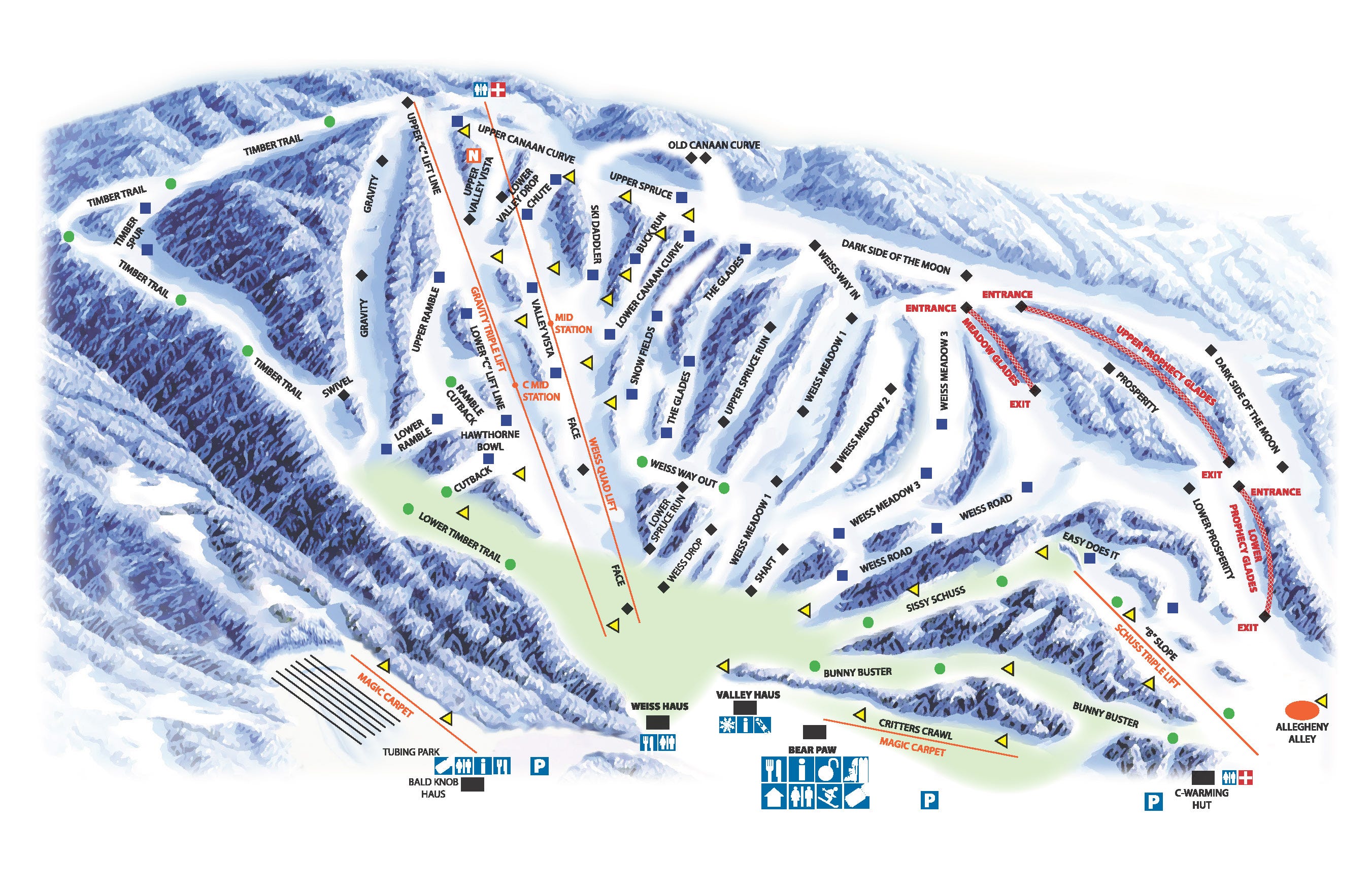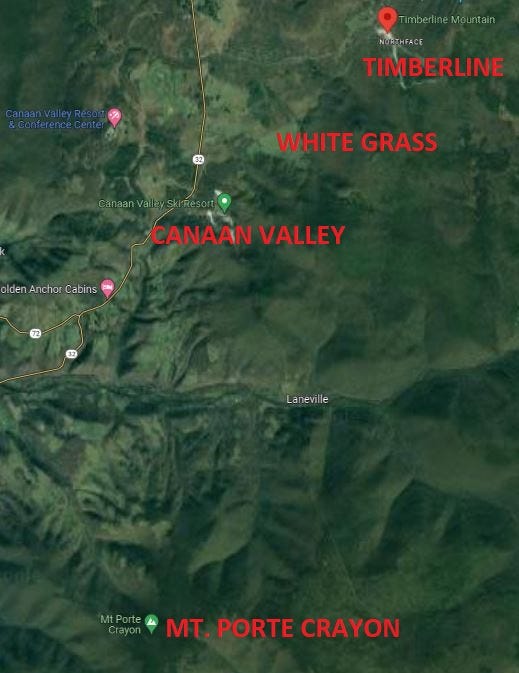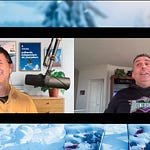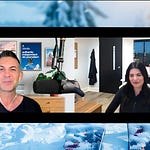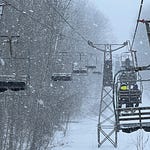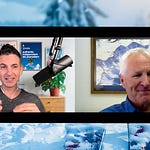Who
Tom Price, General Manager of Timberline, West Virginia
Recorded on
June 26, 2023
About Timberline, West Virginia
Click here for a mountain stats overview
Owned by: The Perfect Family
Located in: Davis, West Virginia
Year founded: 1983
Pass affiliations: The Perfect Pass – unlimited access
Reciprocal partners: unlimited access to Perfect North, Indiana with the Perfect Pass
Closest neighboring ski areas: Canaan Valley (8 minutes); White Grass XC touring/backcountry center (11 minutes); Wisp, Maryland (1 hour, 15 minutes); Snowshoe, West Virginia (1 hour, 50 minutes); Bryce, Virginia (2 hours); Homestead, Virginia (2 hours); Massanutten, Virginia (2 hours, 21 minutes)
Base elevation: 3,268 feet
Summit elevation: 4,268 feet
Vertical drop: 1,000 feet
Skiable Acres: 100
Average annual snowfall: 150 inches
Trail count: 20 (2 double-black, 2 black, 6 intermediate, 10 beginner), plus two named glades and two terrain parks
Lift count: 4 (1 high-speed six-pack, 1 fixed-grip quad, 2 carpets - view Lift Blog’s inventory of Timberline’s lift fleet)
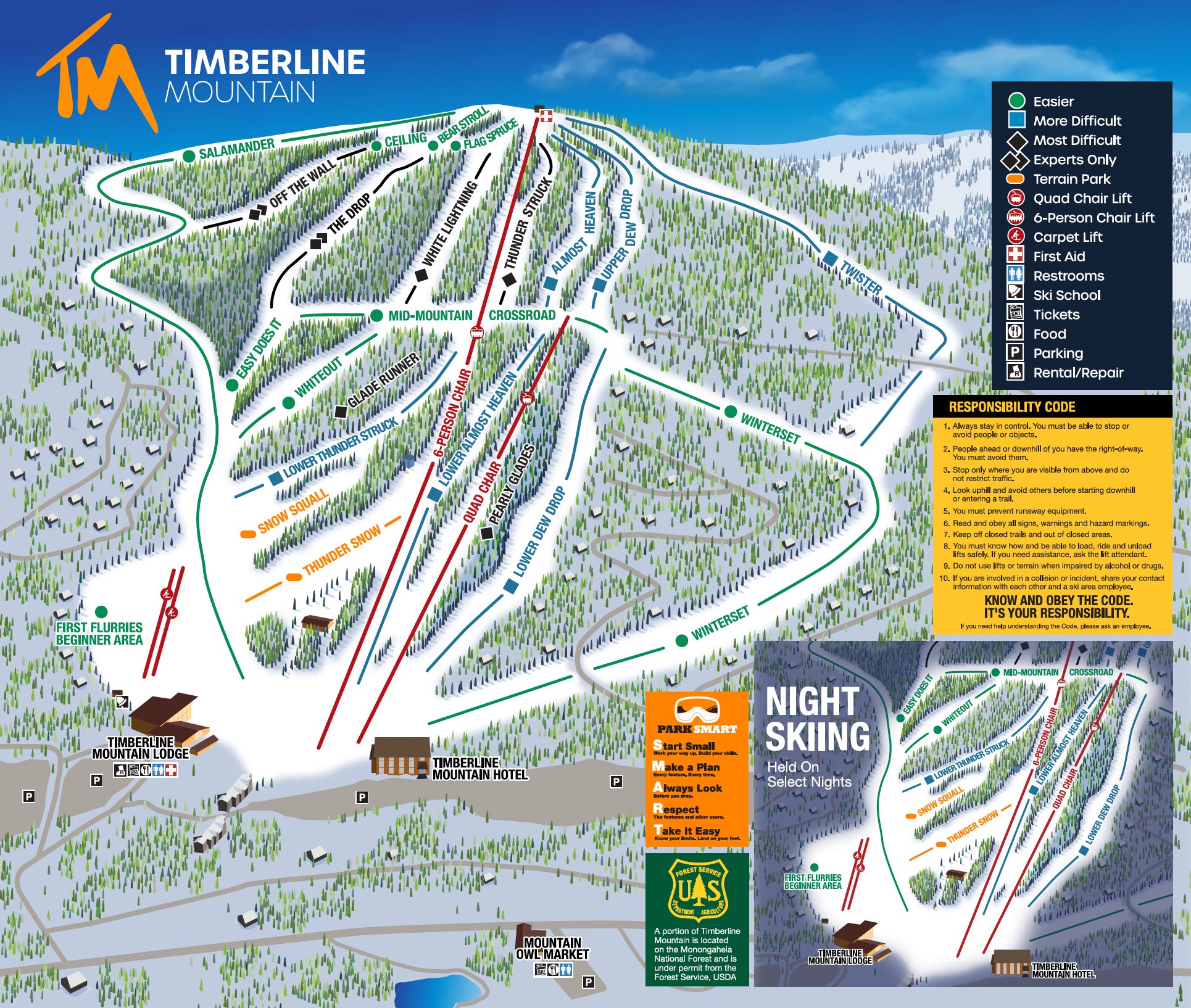
Why I interviewed him
In January, I arrived at Timberline on day five of a brutal six-day meltdown across the Mid-Atlantic. I’d passed through six other ski areas en route – all were partially open, stapled together, passable but clearly struggling. Then this:
After three days of melt-out tiptoe, I was not prepared for what I found at gut-renovated Timberline. And what I found was 1,000 vertical feet of the best version of warm-weather skiing I’ve ever seen. Other than the trail footprint, this is a brand-new ski area. When the Perfect Family – who run Perfect North, Indiana like some sort of military operation – bought the joint in 2020, they tore out the lifts, put in a brand-new six-pack and carpet-loaded quad, installed all-new snowmaking, and gut-renovated the lodge. It is remarkable. Stunning. Not a hole in the snowpack. Coming down the mountain from Davis, you can see Timberline across the valley beside state-run Canaan Valley ski area – the former striped in white, the latter mostly barren.
I skied four fast laps off the summit before the sixer shut at 4:30. Then a dozen runs off the quad. The skier level is comically terrible, beginners sprawled all over the unload, all over the green trails. But the energy is level 100 amped, and everyone I talked to raved about the transformation under the new owners. I hope the Perfect family buys 50 more ski areas – their template works.
Perfect North is one of the most incredible ski areas in the country, a machine that proves skiing can thrive in marginal conditions. Timberline is Exhibit B, demonstrating that an operating model built on aggressive snowmaking and constant investment can scale.
Which seems obvious, right? We’re not exactly trying to decipher grandma’s secret meatloaf recipe here. But it’s not so easy. Vail Resorts has barely kept Paoli Peaks – Indiana’s only other ski area – open two dozen days each of the past two seasons (Perfect North hit 86 days for the 2022-23 winter and 81 in 2021-22). And Canaan Valley, next door to Timberline, is like that house with uncut grass and dogs pooping all over the yard. Surely they’re aware of a lawnmower. And yet.
Skiers, everywhere, want very simple things: snow to ski on, a reliable product, consistency. That can be hard to deliver in an unpredictable world. But while their competitors make excuses, Timberline and Perfect North make snow.
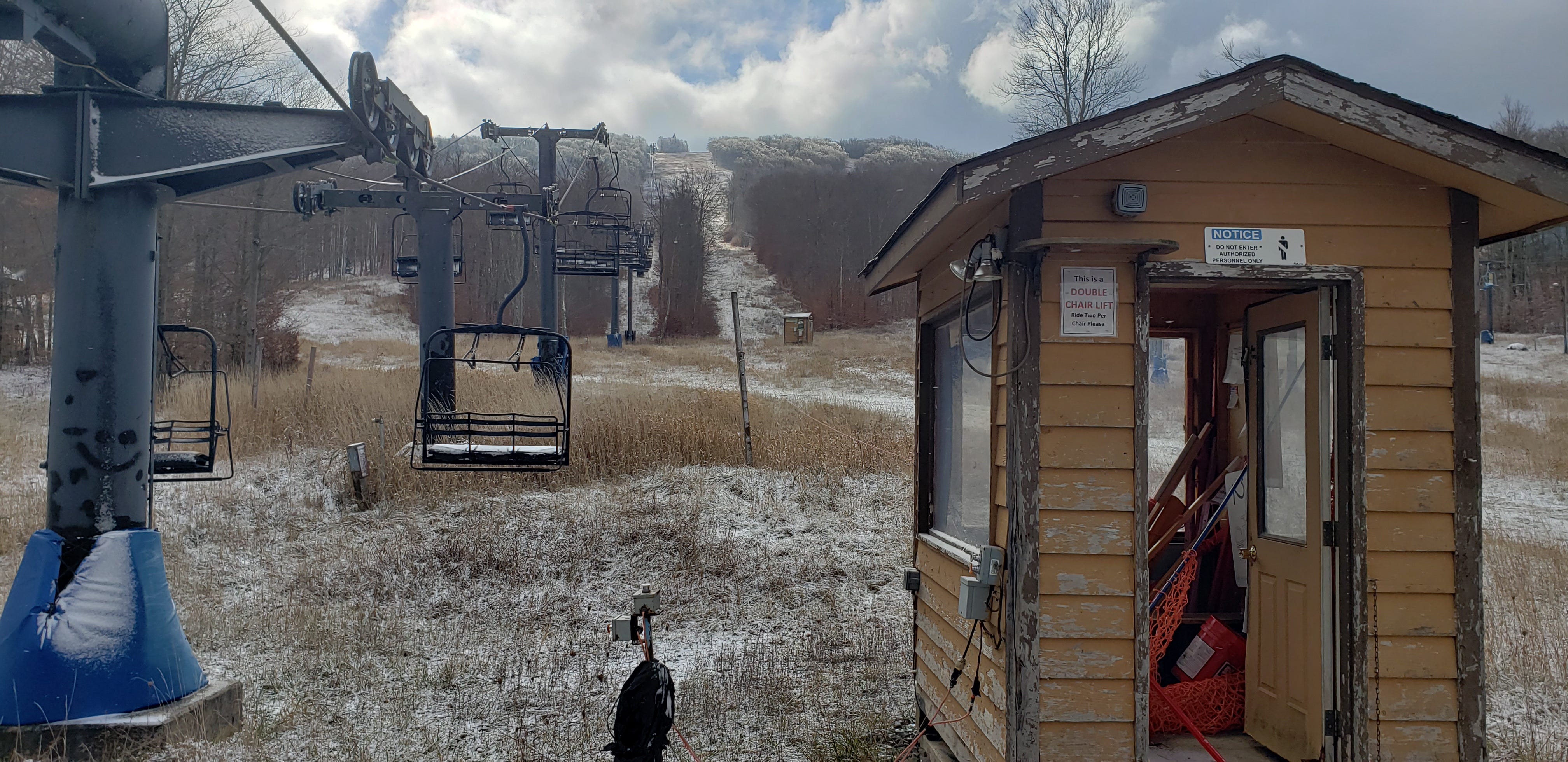
What we talked about
Snowmaking, snowmaking, snowmaking; applying an Indiana operating philosophy to the Appalachian wilds; changing consumer expectations; 36 inches of snow in May and why the ski area didn’t open when the storm hit; night skiing returns; when you fall in love with an uncomfortable thing; leaving Utah for Indiana; The Perfect family and Perfect North Slopes; fire in Ohio; what happened when Perfect North bought Timberline; a brief history of Timberline and why it failed; why this time is different; Mid-Atlantic and West Virginia ski culture; “you bought a ski area with no chairlifts”; why Timberline installed a six-pack to the summit to replace two old top-to-bottom triples; deciding on a fixed-grip quad for a mid-mountain lift; coming tweaks to smooth out unloading; why Timberline moved the beginner area over toward the lodge; whether we could see a mountain-top beginner area; the surprising trail that was a major factor in the decision to purchase Timberline; big plans for the terrain park, including a surface lift; how the trail footprint evolved from one ownership group to the next; trail map as marketing tool versus functional tool; expanding the glade network; potential trail expansion; considering a second summit lift for Timberline; a spectacular lodge renovation; adding up the investment; assessing local and destination support three seasons into the comeback; growing Timberline into more of a Southeast-style resort a-la Snowshoe or Wintergreen; reception so far for the “Perfect Pass” combo pass with Perfect North; the Indy Pass; and Timberline’s unique day-ticket price structure.
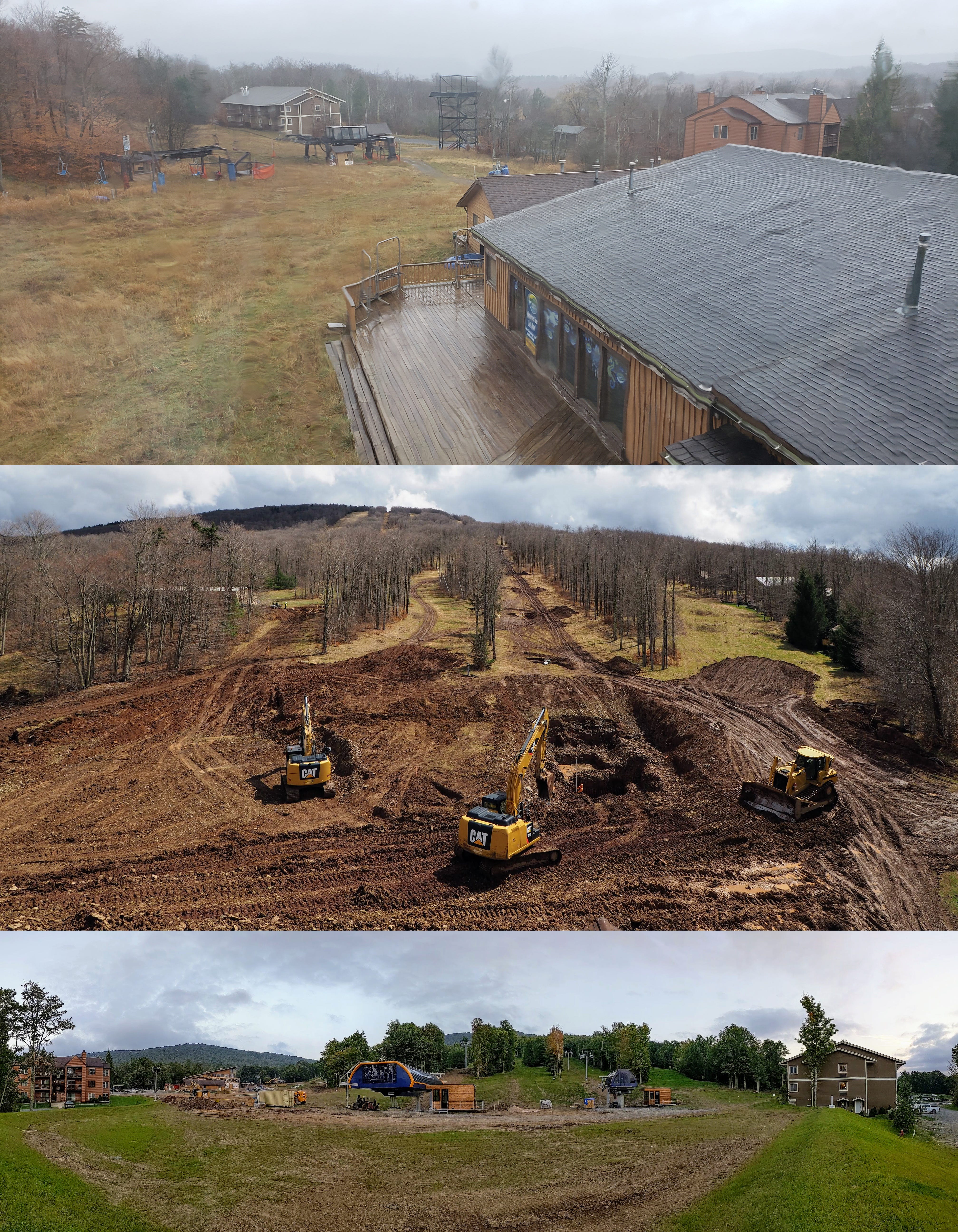
Why I thought that now was a good time for this interview
This has been one of my most-requested interviews since the Perfects bought the place back in 2019. The splash and kazam of Timberline’s renovation inspired awe and jealousy among skiers, who couldn’t believe how easy the new owners made it all look and resent the 60-year-old Hall doubles spinning at their local. Despite the fact that It’s three-decades-old technology, a high-speed six-pack still stirs up a thrill in most skiers, an emblem of prosperity and seriousness, amplified by the fact that some of America’s wealthiest resorts – Jackson Hole, Deer Valley, Aspen Mountain and Highlands, Beaver Creek, Alta, Snowbird – still don’t have a single sixer between them.
Which, OK, great. Throw a $20 million renovation at a trailer park, and it will start to resemble Beverly Hills. But do you want to live there? That’s what I needed to figure out: was Timberline a flashy gamble for an out-of-its-league Midwest operator, or proof-of-concept for an industry that needs to fortify itself for life in a different sort of world than most of its ski areas were born into?
Obviously, I think it’s the latter. But it’s hard to explain. Most skiers outside of the region refuse to take Mid-Atlantic skiing seriously. But it’s time to start paying closer attention. There are some seriously talented operators in Appalachia. Wintergreen, Virginia just finished a season with exactly zero inches of natural snowfall. Massanutten, Virginia and Wisp, Maryland both opened in November despite temperatures in the 70s for most of the month. The climate catastrophes that loom over skiing’s future are the realities that Mid-Atlantic ski areas just spent three decades adapting to.
Timberline had the advantage of starting over with all of its institutional knowledge, the hard lessons of the region’s recent past, and the low-energy, high-impact technology of the current moment. It’s a powerful combination, and one that has made Timberline a showcase for what a ski area of the 2020s can be. With three seasons of operations behind it, it was time to check in and ask how well all that was working.
What I got wrong
I said that Perfect North had 200 snowguns. The actual number, according to this SMI case study, is 245.
I stated that the vertical drop of the now-removed lower-mountain beginner chairlift was “a couple hundred vertical feet maybe.” It was 90 feet, according to Lift Blog.
Why you should ski Timberline
Timberline has one thing that its competitors don’t: legit, border-to-border terrain. As Price tells me in our interview, there are “probably 100” trails on the mountain when it snows, which it does more in this pocket of high-altitude West Virginia than anywhere else in the region.
Most Mid-Atlantic ski areas are all-seasons resorts with ski areas attached. Timberline, however, is more ski than resort. It’s a badass little mountain, with a thousand vertical feet of expansive, imaginative lines. That makes Timberline an indispensable character in the regional ski cast, the sort of bruiser that any ski state needs as a foil to its more manicured neighbors (think Mount Bohemia, Michigan; Berkshire East, Massachusetts; Plattekill, New York; Magic Mountain, Vermont; Wildcat, New Hampshire). Yes, parks are important. Grooming is essential. But so is tree-skiing. So is opening up the wide and wild world off-piste. This is what keeps skiing interesting, and what sends locals out into the wider world, north and west, to explore the vastness of it all.
Podcast Notes
On Perfect North
The other day, my family watched Back to the Future Part II. My daughter hadn’t been with us when we’d watched part one a few days prior, and so she was a little confused. Similarly, if you listen to this Timberline episode before the episode I recorded with Perfect North GM Jonathan Davis last summer, you’ll be starting behind. Not only does that episode contain important background on the Perfect family’s accidental but fierce entrance into the ski industry, but Davis discusses how the family bought Timberline in a 2019 auction. The story starts at the 1:30:33 mark:
On Timberline’s renaissance
DC Ski also wrote a comprehensive article on Timberline’s comeback:
On the lodge fire at Mad River (not that Mad River)
Price was general manager at Mad River, Ohio – which was at the time owned by Peak Resorts and is now a Vail property – when a fire destroyed the lodge:
Peak Resorts quickly built a new lodge, investing $6.5 million into a facility that was almost twice the size of the old one.
On the lift accident at Timberline
Price discusses a lift de-ropement that marred Timberline’s reputation. The local ABC News affiliate wrote about the incident shortly after it occurred, in February 2016:
About 25 people fell to the ground after a ski lift derailed at the Timberline Resort in Davis, West Virginia, this morning, an official told ABC News.
The drop was about 30 feet, according to Joe Stevens of the West Virginia Ski Areas Association, of which Timberline is a member.
Two people were hospitalized with non-life threatening injuries, Stevens said.
About 100 skiers were left stranded on the ski lift after the derailment, Chief Sandy Green of Canaan Valley Fire Department Chief Sandy Green told ABC News.
The lift in question was Thunderstruck, a triple chair that, along with the resort’s other two chairlifts, the new owners demolished in 2020.
On the old trailmaps/lift configuration/trail footprint
Price and I talked extensively about Timberline’s new and old lift and trail alignments, which differ significantly. Here’s a circa 2016 trailmap, showing the mountain with two top-to-bottom triples and several trails that no longer exist:
And here are the old and contemporary maps side by side:
On White Grass and Canaan Valley
Timberline is adjacent to two ski areas: White Grass Touring Center and Canaan Valley. Here’s how they stack together on the map:
White Grass is widely considered one of the best cross-country ski areas in the East, with 50 kilometers of trails:
Canaan Valley is owned by the state of West Virginia. It’s an 850-footer with 95 acres of terrain:
Both Canaan and White Grass are Indy Pass partners. You can ski between all three ski areas, Price says, on cross-country skis, though a peak separates White Grass and Canaan.
As impressive as this three-resort lineup is, the region could have grown into something even more spectacular, had a planned resort been built at nearby Mount Porte Crayon. Blue Ridge Outdoors profiled this ski-area-that-never-was in 2010:
Porte Crayon has all the right ingredients for a resort: an average of 150 to 200 inches of snow a year, a unique hollow shape that helps push much of the windblown snow onto the northern slopes, and big vertical drop.
“From top to bottom, we were looking at a true 2,200 foot vertical drop, making it the sixth largest vertical drop at a resort east of the Rockies, with weather similar to southern Vermont,” Jorgenson says. “It would have been the largest resort south of Lake Placid, New York.”
Bright Enterprises started buying up land on Porte Crayon over a decade ago. The plan called for a 2,000-acre resort with more than 2,000 feet of vertical drop on a north-facing slope that got plenty of natural snow. Skiers salivated over the prospect of skiing that kind of terrain below the Mason Dixon, while environmentalists cringed at the thought of a mountaintop village, golf course, and second home development scarring the pristine landscape.
For ten years, a debate brewed with locals and skiers coming down hard either for or against Almost Heaven. Eventually, Bright Enterprises failed to purchase a significant piece of private land at the top of the mountain, and resort plans fell apart.
Today, the mountain is a well-known backcountry ski zone. It sits just eight miles overland from Timberline:
The Storm publishes year-round, and guarantees 100 articles per year. This is article 60/100 in 2023, and number 446 since launching on Oct. 13, 2019. Want to send feedback? Reply to this email and I will answer (unless you sound insane, or, more likely, I just get busy). You can also email skiing@substack.com.



